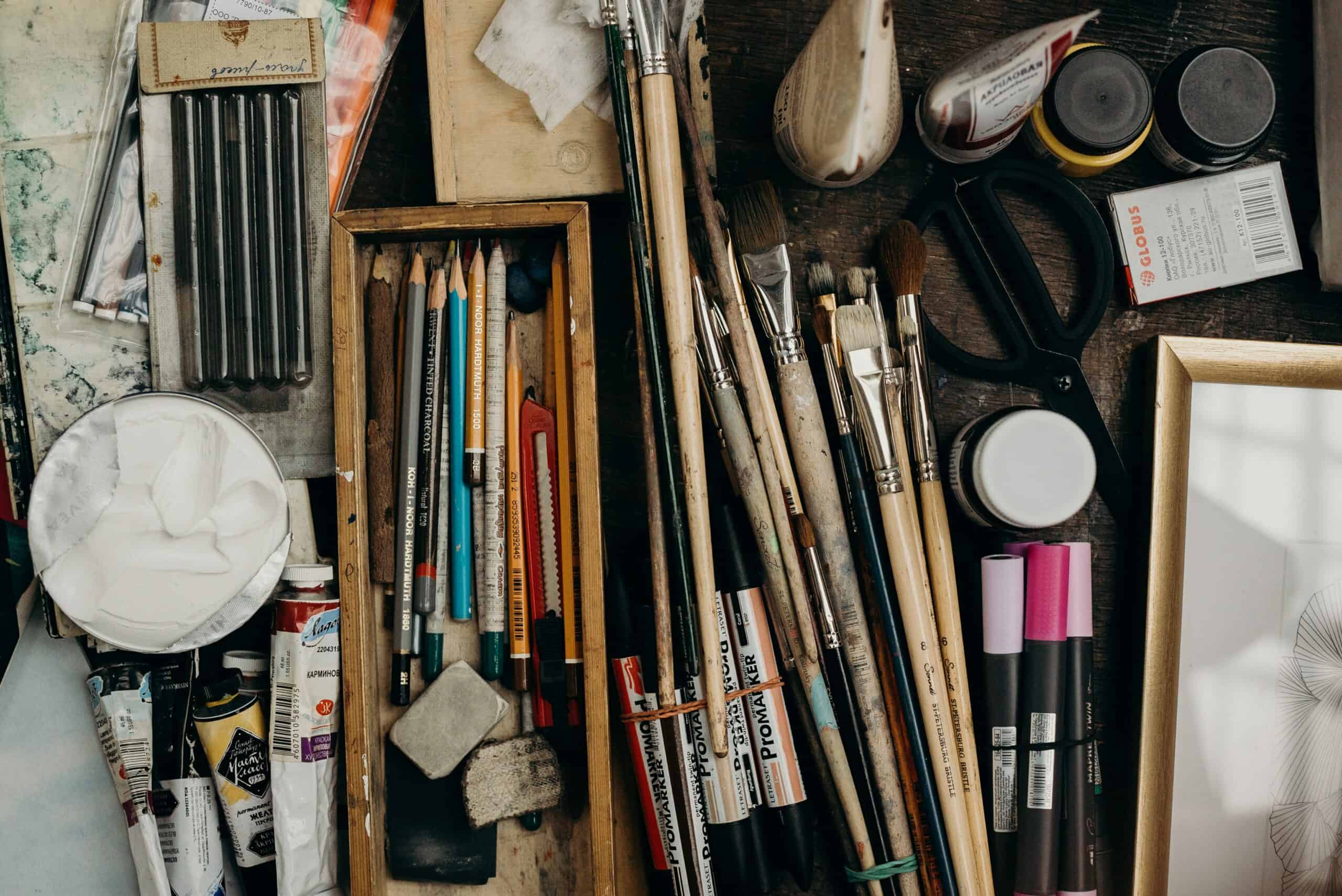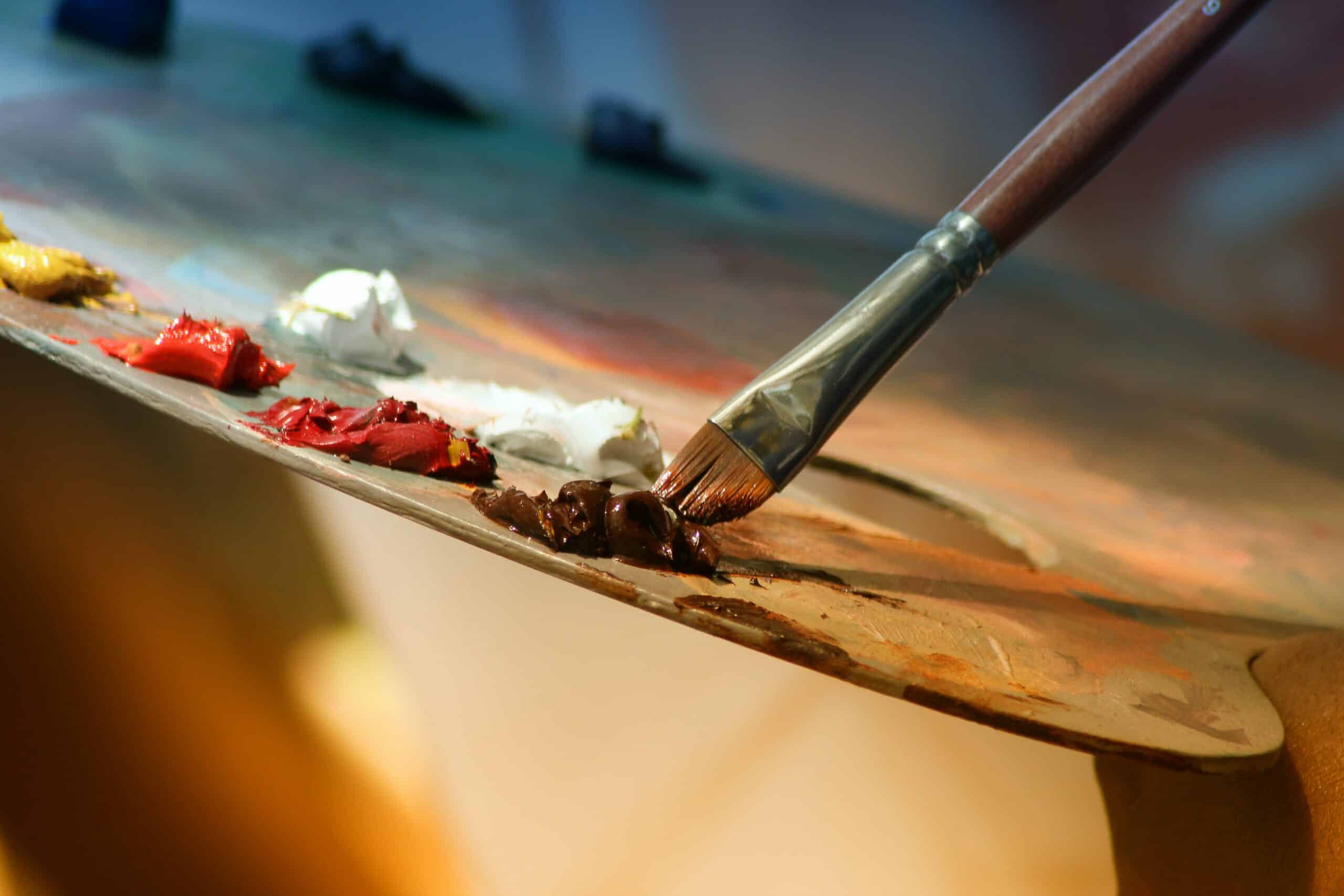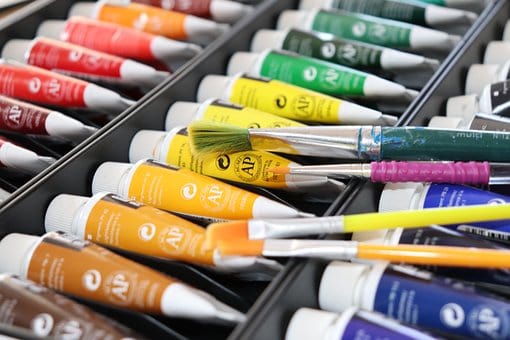From Primary Colors to Masterpieces: How to Mix Oil Paint Like a Pro
Welcome to the wonderful world of oil painting! If you’ve ever been curious about how to mix and blend different colors of oil paint, then this article is for you. As an artist with years of experience in mixing oils, I'm here to share my expertise on this topic so that you can take your artwork to a new level.
Mixing oil paints correctly requires knowledge and skill – but don't worry; it's not as daunting as it may seem at first. You just need to learn some basic techniques and understand which materials work best together. With practice, trial and error, and patience you'll soon become comfortable enough to experiment with various color combinations.
As someone who loves working with these versatile mediums, I hope that by the end of this article, you will have gained confidence in creating beautiful masterpieces from your own unique mixes. So what are we waiting for? Let’s get started!
What You Need
As an artist, you know that the key to a successful painting is having all the right tools. And when it comes to oil painting, there are some essential items that no serious painter should be without. So get your paintbrushes ready and prepare for a colorful adventure!

First off, you'll need some quality oil paint. Choose from a wide range of colors and don't forget about white - it's just as important! Next up is the painting surface - usually, canvas or wood panel is best. Then grab yourself a couple of containers of paint thinner to help mix the paints. Finally, pick up a palette knife so you can skillfully apply each color with precision.
Now that you've got all the supplies necessary for creating your masterpiece, let's move on to getting those perfect hues!
Creating The Right Color
Creating the right color for your oil painting is a mixture of mixing colors, creating hues and tints, and experimenting with paint combinations. To create an effective painting, you must learn how to mix colors so that they work together in harmony. The most basic way to achieve this is by using what I call ‘color matching’. This method involves taking two or more shades of one particular hue and blending them until it closely resembles the desired shade.
For example, if you want to lighten a particular blue hue, try adding white or yellow to it until you get the desired result. You can also use other colors from different palettes to create new shades as well.
When learning how to mix colors in oil paints, always keep in mind that too much of any one color will overpower the overall look of the piece, so be sure not to overmix! Experimentation is key here - test out different combinations before committing to a final blend. With practice and patience, you'll eventually find yourself able to accurately recreate any color combination imaginable on canvas - whether it's subtle variations on existing hues or unique creations of your invention. As we move forward into our next lesson on blending paint colors, remember that mastering such techniques takes time but results in beautiful paintings every time!
Blending Paint Colors
Mixing colors is one of the most exciting steps in oil painting. It’s where you get to experiment with different hues and create unique color combinations that add vibrancy, depth, and life to your paintings. To be successful at this step, it’s important to understand how the paints interact with each other when blending them.

The best way to start mixing is by creating a neutral base color from white and black paint or raw umber and titanium white for a warmer shade. You can then gradually adjust the hue until you achieve the desired result by adding small amounts of various colors into the mix. For example, if you want a blue-green tone, start with dark green and slowly add some blue to lighten it up. When adjusting the intensity of your paint, make sure to use a palette knife instead of just brushing on more layers as this will help preserve its texture and vibrancy.
When combining mediums with your paint, begin with equal parts oil medium (linseed or walnut) and turpentine before adding either type of solvent in smaller increments depending on what effect you're after—for transparency, use more turpentine; for body and texture, opt for more oil medium. This combination also helps keep your colors true while giving them an even consistency throughout the painting process which results in smoother layering effects on the canvas. Now that you have all these tips down pat, go ahead and experiment with pigment combinations!
Adding Mediums To Paints
Now that you have learned the basic principles of blending paint colors, it's time to explore how to mix oil paints with mediums. This can be a tricky process as there are many different kinds of mediums available for use in oil painting and each one affects the texture and consistency of your paint differently. By understanding what kind of effect each medium will have on your painting, you'll be able to determine which type is best suited for your needs.
Here are 4 key points about mixing mediums into oils:
- Paint Mediums can help increase flow and transparency without affecting color saturation or intensity.
- Oil Painting techniques such as scumbling, glazing, impasto, etc., require different types of mediums to achieve certain effects.
- Mixing Mediums also helps reduce brushstrokes while increasing glossiness or matte finish depending on the choice of media used.
- Properly adding mediums to oil paints requires an understanding of their individual properties so they can be combined correctly.
When using multiple layers in your paintings, applying some sort of varnish may become necessary after all the drying stages have occurred; this is when knowing the different types of mediums becomes crucial. A well-balanced combination will give you greater control over both color intensity and level of flexibility during application - resulting in a more polished end product. With a little practice, anyone can learn how to properly mix oil paint with various mediums for optimal results! Now let's move on to proper cleanup and storage measures...
Proper Cleanup And Storage

It's estimated that around 75 percent of an artist's time in oil painting is spent on cleanup and storage. It can be a tedious process, but it's worth the effort if you want your work to look its best. With proper cleaning techniques and effective paint storage tips, you can make sure your paints are always ready for use when inspiration strikes.
When cleaning up after a session with oil paint, start by wiping away any excess pigment from your brush or palette knife using a paper towel or rag. Take care not to spread the color onto other areas of the canvas or painting surface as this may ruin its appearance later on. Once all visible traces have been removed from the tools, dip them into mineral spirits or turpentine and give them a good scrubbing until they're clean again. When done correctly, this should ensure no color residue remains on either piece of equipment.
Once you've taken care of the brushes and knives, store them properly so they won't dry out before your next project begins. Place each item separately in an airtight container filled with some sort of preservative such as vegetable oil or linseed oil to prevent rusting and corrosion over time. If stored in this manner, these items will stay usable for much longer than if left exposed to open-air conditions.
Now that we've discussed how to go about cleaning up after our painting session and storing supplies appropriately, let’s move on to discussing techniques for applying oil paint successfully!
Techniques For Applying Paint
When applying oil paint to create a masterpiece, it's important to understand the various techniques available and how they can be used effectively. To help you in your journey of mastering painting with oils, here is a table breaking down some of the most common methods for applying this unique medium:
Technique | Description |
|---|---|
Brush Strokes | Using one or more brushes loaded with varying amounts of paint, brush strokes are made on the canvas to create texture and shape. The direction and thickness of the stroke will depend on what effect you desire. |
Dabbing Paint | By dabbing small dots of paint onto the surface rather than brushing them on, you can achieve an interesting dotted pattern that gives your work added dimension. This technique is best when using multiple colors. |
Flat Wash | A flat wash involves covering large areas with thin layers of color which helps create smooth transitions between hues while also allowing any underlying colors to show through faintly. This technique works well when creating landscapes or abstract compositions. |
Dry Brushing | With dry brushing, a nearly-dry brush is lightly dragged across the canvas in different directions to leave behind streaks of pigment that have been pulled from other parts of the painting. It's perfect for adding highlights or shadows without completely obscuring underlying colors. |
These painting techniques all require practice before achieving optimal results - but when mastered correctly, they can take your artwork to new heights!
Tips For Optimal Results
When it comes to oil painting, mixing the paints is a crucial step in achieving optimal results. Understanding how and when to mix your colors is an essential part of becoming a successful artist. With these simple tips, you can ensure that your paintings turn out exactly as you envision them!
First off, be mindful of which type of oil-mixing brush or medium you are using. Make sure that the brushes and mediums you use are specifically designed for mixing paint - not all brushes will do the job correctly. Also, pay attention to the size of your brush; if it’s too small for your canvas, then color blending could become more difficult than necessary.
Secondly, experiment with different techniques for combining paints on your palette before applying them to your canvas. There is no one-size-fits-all solution – don’t be afraid to try various ways until you find what works best for you.
Consider also taking some time to practice and perfect your technique before attempting complex mixes involving multiple colors.
Finally, take into account what kind of effect you want each color to have on its own, as well as when combined with other hues. Mixing pigments yields new shades that may end up looking drastically different from their original form – so understanding this concept beforehand can help prevent any surprises later down the line!
Conclusion
Mixing oil paint can seem intimidating, but with a few tips and tricks, you'll be an expert in no time. As an artist who has spent many hours mastering my craft, I'm here to tell you that the process of mixing colors is quite simple when you take it one step at a time.
The key to success lies in having all the right tools for blending paint colors as well as knowing how to properly add mediums like linseed and stand oils. Additionally, proper cleanup and storage are essential if you want your artwork to last for years without fading or discoloring. Once you have those basics down pat, then comes the fun part – experimenting with different techniques to apply paint on your canvas!
All these steps may seem overwhelming initially, but don't let fear hold you back from becoming a master painter. With some practice and patience, soon enough you will be creating beautiful works of art using oil paints just like me!






